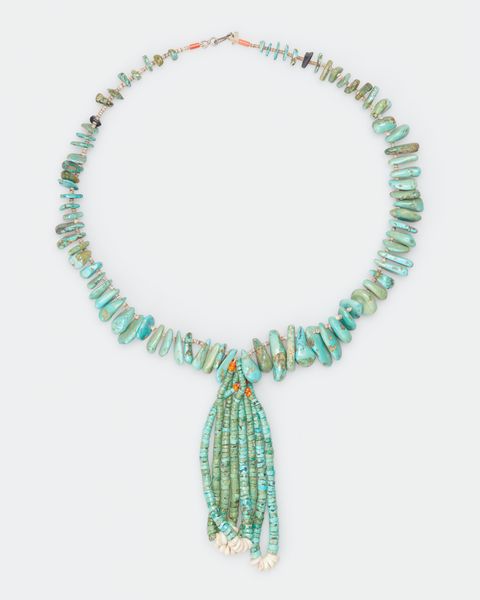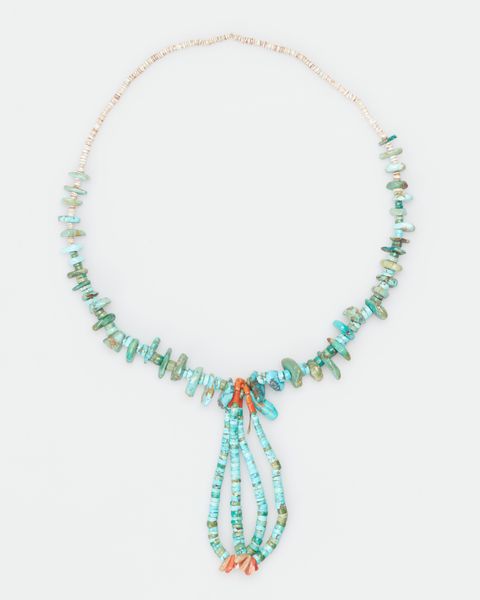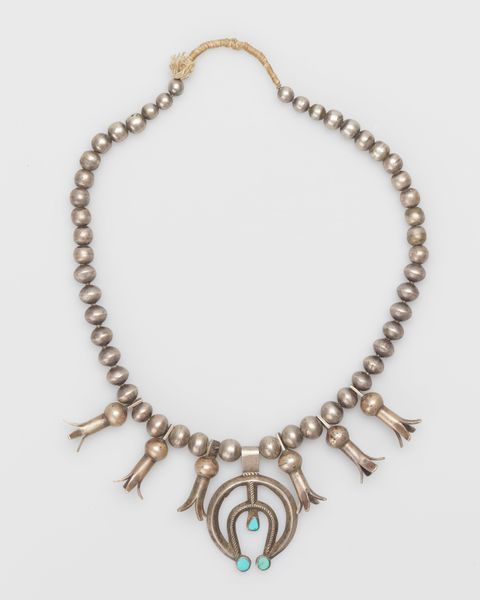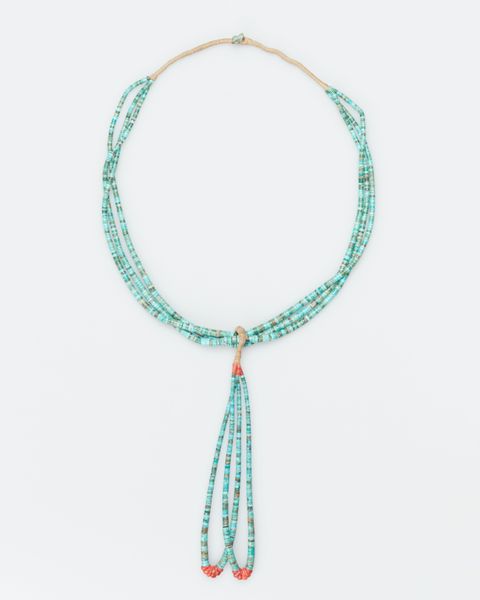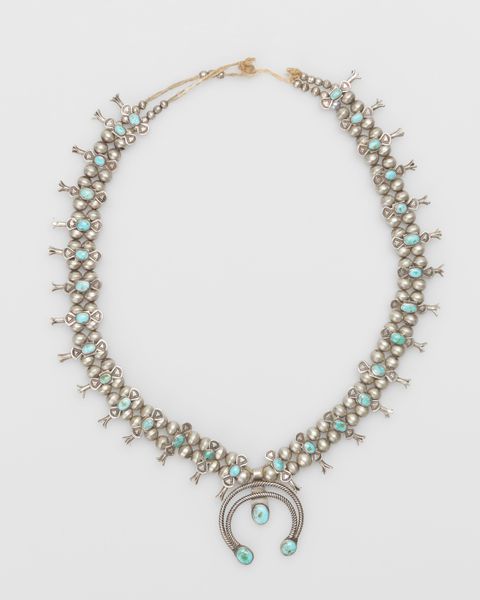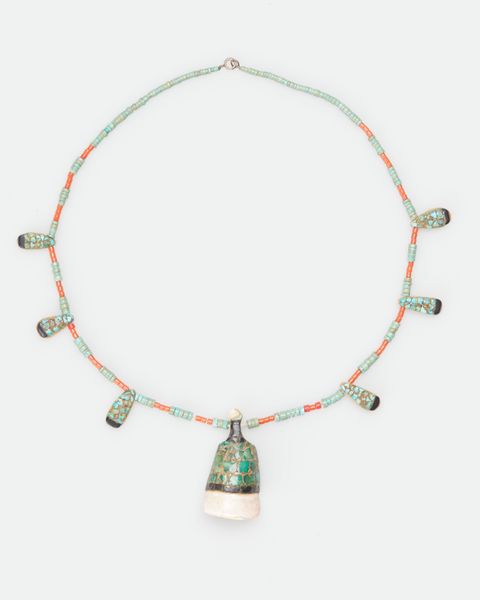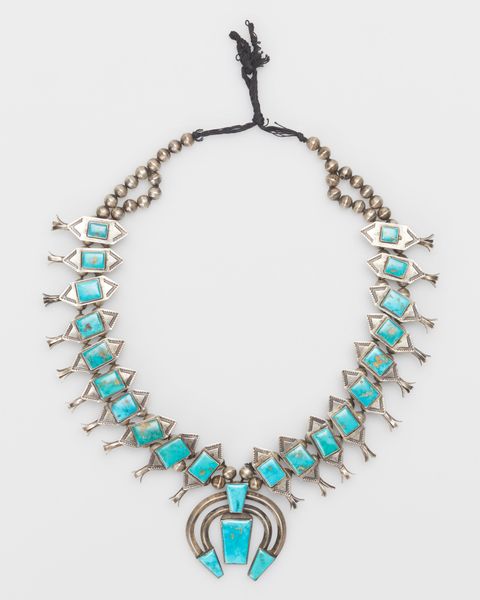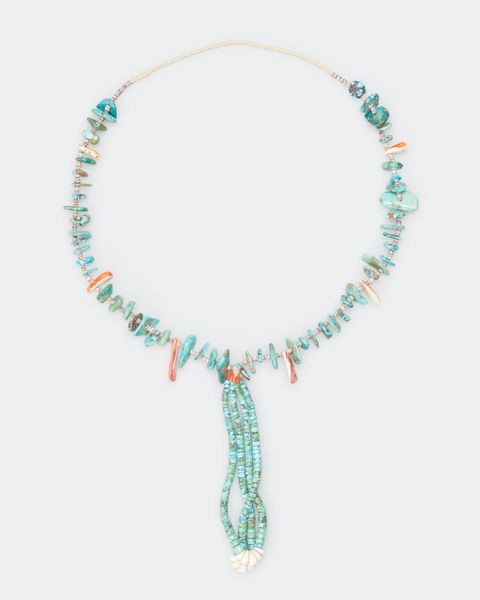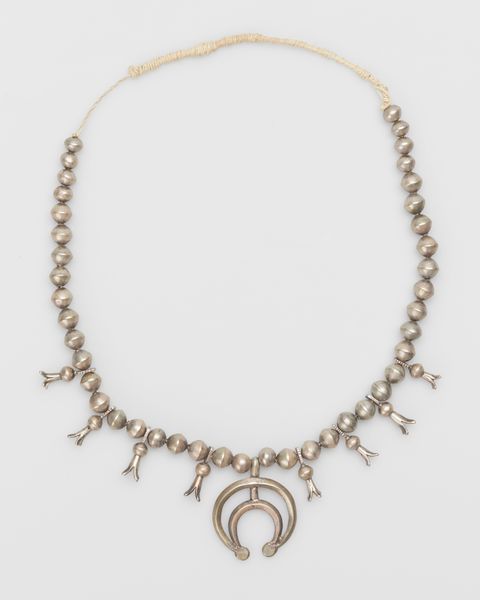
assemblage, metal, sculpture
#
assemblage
#
metal
#
sculpture
#
yoruba-art
Dimensions: 45 1/4 × 1 1/8 × 5/8 in. (114.94 × 2.86 × 1.59 cm)
Copyright: No Known Copyright
Curator: What strikes me first is this piece's strange duality, a blend of restraint and joyful ornamentation. The matte surfaces of those seed pods create such an earthy feeling and it's anchored, quite literally, by these bursts of color and glass beads. What do you think? Editor: The word "fragmented" keeps popping into my head, maybe because of those open pods. They look as though they are spilling something out – potential, history, secrets, whatever it might be... I find that really evocative. Curator: Well, let me shed a little light on its purpose. This is an opele oracle chain from the Yoruba people, likely created around the mid-20th century. This one is at the Minneapolis Institute of Art. Editor: An oracle chain. Suddenly all the symbolism makes even more sense. A physical embodiment of the intangible. Curator: Precisely! Each half-pod, connected by a string of beads, carries deep meaning. When cast by a Babalawo, a Yoruba diviner, the pattern formed by the pods reveals answers, advice, guidance from the spirit world. It's made of organic, earthly materials – metal and seed – speaking directly to Yoruba’s commitment to the natural world. Editor: You know, it’s incredible to think about the countless decisions contained in its making. Everything had to have felt important. Choosing just the right color beads. Or the pods that were ripe enough for this specific divination. Curator: And look how time is visible in this artwork. The pods bear markings of consistent use. Each choice reverberates through Yoruba cultural memory, through the divination practices it facilitated. Each component speaks and reminds. Editor: Absolutely. The imperfections enhance the effect. And this reminds me of the weight of our past decisions, a feeling captured so perfectly in a divination tool. Curator: A potent reminder indeed of the unseen forces guiding us, shaping our paths. Thank you. Editor: My pleasure. It's a powerful piece; so happy to ponder it with you.
Comments
minneapolisinstituteofart almost 2 years ago
⋮
A Yoruba diviner seizes this oracle chain in the middle and casts it on a wooden board. The half-nuts of the opele tree—which gives its name to this chain—land with either the outside or the inside facing up. Depending on their numbers, a result emerges that the diviners then interprets in light of the problem for which he is consulted. A Christian medallion has been attached to one of the half-nuts. This remarkable addition illustrates the creativity on the part of the ritual specialist in bringing together different belief systems.
Join the conversation
Join millions of artists and users on Artera today and experience the ultimate creative platform.
